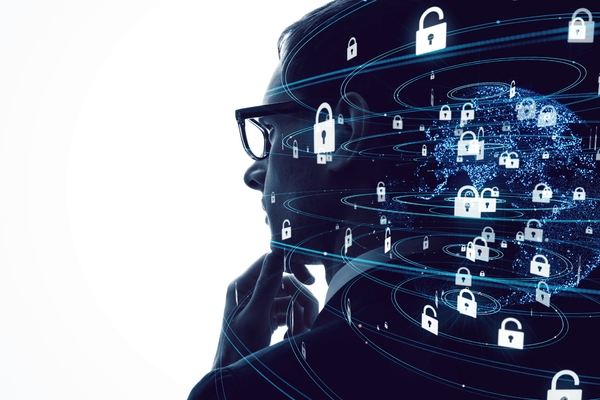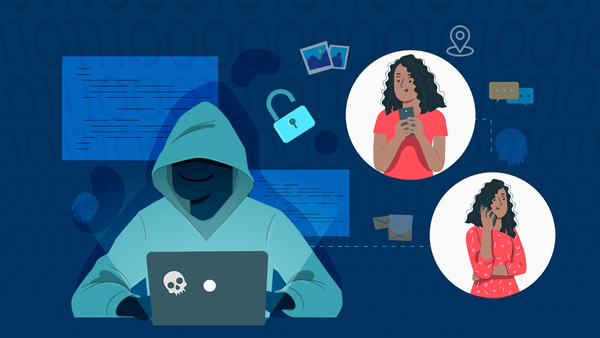Understanding Identity Theft: Prevention, Consequences, and Recovery

Imagine a scenario where you wake up a fine morning and find out that your name is being accused of a crime you never committed. A transaction is made from your bank account that you aren’t even aware of. It could be far more dangerous than this. This silent invasion and planned chaos are the consequences of identity theft. Let us understand more about this cybercrime, its consequences, and prevention to keep your digital identity secure.
What Is The Meaning of Identity Theft?
A multifaceted digital crime where a cybercriminal illicitly obtains an individual’s identity and uses it without their consent. It is a prevalent crime in the cyber world, with various forms of exploitation, threats, and dangers accompanying it. The criminal makes unauthorized use of the victim’s name, bank account, and personal data for personal gain. It can be very organized and hard to trace at times; however, advanced cybercrime police methodologies can help the victims gain back their online data and stay safe.
In the digital era, identity and private resources/data are trailed as currencies and exploited in the dark web market. It is a severe crime where privacy is being stripped off and misused without consent.
Stages of Identity Theft: Data Theft and Misuse
Steal It: Personal Data Acquisition
It can be done digitally in many ways, such as with fake malicious links, hacking, phishing, etc. Many cyber criminals even interact with the victim in real life to attain all this physically and then exploit their identity for their malicious intentions.
Use It: Misuse of Obtained Information
The hacked information is used without authorization to channel medical benefits, bank accounts, social benefits, or other government merits. The information can also be used to register at unknown places without any consent. It can have grave consequences if left unnoticed without reporting it to the cyber police.
How They Steal Your Identity?
In the digital landscape, several sophisticated and cyber-advanced tactics are being used to extort personal data worldwide. One or more individuals can use this process for their benefit, hate crimes, revenge, or monetary extortion.
- Phishing: Such crimes are done in a way that mimics a renowned website or source. People would often mistakenly click on a spam email or link as it would look very legit. This will redirect them to a separate page prompting them to reveal their personal information or confirm any registered data, thereby hacking it in the process.
- Breach: Hackers/cybercriminals can breach government organizations, industries, or corporations to extract their database and exploit it further. It is a large-scale theft with fewer chances of being traced back.
- Social media: Cybercrime through social media is the most common technique of gathering information about someone and creating a fake profile in their name.
- Network/Wi-Fi intrusion: Networks with weak security are easy access points for scammers and hackers, which can be used to transmit personally secured data, passwords, etc.
How They Use Your Stolen Data?
- Financial Benefits: The perpetrator can use your data for unauthorized credit card transactions (carding), bank account transactions, or even loans. This theft causes bigger financial losses and reduced credit scores, damaging their inventorial benefits.
- Medical: The hacker uses unauthorized medical account information to buy drugs, make claims, or avail services in the victim’s name. At times, this is also recorded under the patient’s name, resulting in health risks and potential monetary loss.
- Criminal: The perpetrator uses a fake name and identity in case of arrests or legal procedures to avoid paying the charges. The victim will face sudden legal battles and charges for crimes that weren’t committed by them. All of these events can hurt their social image, causing mental distress.
- Family Impersonation: The thief can use the name and identity of your child or family member to open bank accounts and obtain social or government merits in their name. This will lead to discrepancies for the family in financial records and their evaluations.
- Employment: The perpetrator can use the victim’s identity and educational achievements to land careers, get employed, receive tax benefits, etc.
Consequences of Identity Theft
Cybercrimes like identity theft impact individuals, organizations, and even national security.
Personal Consequences of Identity Theft
Personal identity theft can have consequences that are instant and long-lasting. Using financial data without authorization causes immediate financial loss and fraudulent transactions. These are recorded to have financial repercussions and economic damage. The victim will be facing false credit scores and charges. This would further lead to anxiety, stress, mental panic, confusion, etc., which can be bigger health issues if not treated. Along with these, the victims start having trust issues with everything around them, thus damaging their social profile in society, relations, and profession.
Business Consequences of Identity Theft
The significant consequence is monetary loss that is spent on rectifying the damage, legal advancements, and other fines for protection violations. Potential trust issues among employees and customers are gravely affected, damaging the company's reputation, which was built on trust and long-term communications.
The business also goes through multiple disruptions in its daily operations as a recovery phase, leading to loss of resources and normal activities.
National or International Consequences of Identity Theft
If identity theft or data theft occurs on a monumental scale, it can disrupt government operations, cause database breaches, and pose a national/global security threat. The economy might have to take a sharp turn of downfall if the inflicted damage is not reversed.
Can only businesses become victims of ransomware?
A ransomware attack can be executed on any business, individual, or organization. Not only businesses are the most affected and particularly vulnerable, but individuals and their data are also affected or stolen because of their weak defense system and lack of required resources that can be used to avoid being breached.
How Can We Prevent Identity Theft?
Prevention of identity theft is imperative to battle against similar cybercrimes, which are rampant on a global scale. Handling these crimes with sought-out strategic measures can significantly reduce them and help people be more aware of how they manage their digital footprint. With advanced technologies at our end, we can use preventive software and leverage security techniques to safeguard our information from hackers.
Personal Measures for Preventing Identity Theft
- Utilize strong and complex passwords that are not shared with anyone. Unique questions and answers for backup safety, multifactor verification, etc. It can include biometric verification, such as facial or fingerprint recognition, to secure your data online.
- Keep monitoring your online presence, financial accounts, and bank transactions to ensure stable authority. Any unusual activity shall be reported immediately to the local police or cybercrime divisions.
- Share only what can be shared; avoid oversharing personal information online, as it can be used against the victim to invade their private life. Any social media data can be hacked or traced to exploit its users, which makes it much more dangerous. Ensure to check each security setting before using any social media, including their terms and security policies.
Organizational Measures for Preventing Identity Theft
- Companies must invest in employee training sessions to educate them about cybercrimes' severity and prevention. They can join training programs, and online courses, or learn more about cyber safety. It is crucial to stay alert and recognize such patterns to avoid any future theft attempts.
- Implementation of a cybersecurity division can be a good investment for small-scale to large-scale companies. This division handles regular security updates, checks, firewalls, and different detection and encryption methods for safeguarding information.
- Regular inspection of servers, databases, and other storage access controls that have multiple authorizations is necessary to ensure strict security implementation.
Conclusion
Identity theft can have a profound impact on the victim’s life. The victim must face these consequences while managing their online activity and ensuring privacy. The damage, in some cases, is irreparable and destroys the person’s online image, finances, or even personal and professional life. We must evolve to identify such threats and combat them by being informed and proactive in our solutions.





